Digital Pianos Guide
Number of keys
When choosing a digital piano, one of the first factors to consider is the number of keys it offers. The standard number of keys on a digital piano is 88, which is equivalent to the keys on an acoustic piano. If you are looking for a more compact option without compromising on playability, there are also models available with fewer keys, like the Yamaha P-121, which features 73 keys or the Korg B2N, which has 61 keys. These smaller keyboards are ideal for smaller spaces or for musicians who don't require the full range of an 88-key piano. On the other end of the spectrum are digital grand pianos that offer a traditional grand piano experience with a luxurious touch, such as the Roland GP609, which features 88 wooden keys and offers unparalleled realism in both sound and feel. Other options with different numbers of keys include stage pianos, which are designed for live performances and often feature 76 or 73 keys, like the Kawai ES920 or the Casio PX-5S.

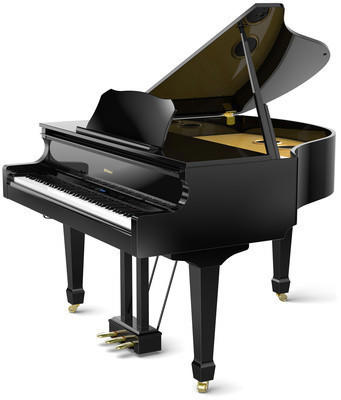

Key action type
Key action refers to the way the keys of a digital piano feel and respond to touch. There are three main types: weighted, semi-weighted, and synth-action. Weighted keys are designed to resemble the feel of an acoustic piano, with a heavier touch on the lower keys and a lighter touch on the higher keys. Recommended digital pianos with weighted key action include the Yamaha P-125, Casio PX-160, and Korg B2. Semi-weighted keys are a great option for those looking for a balance between the feel of an acoustic piano and a synthesizer. The Roland RD-2000 and the Korg Kronos SE are popular digital pianos with semi-weighted key action. For those looking for a more synth-like experience, synth-action keys provide a lighter and more springy feel. Examples of digital pianos with synth-action keys include the Nord Stage 3 and the Novation Impulse 49.


Weighted keys
Weighted keys provide a more realistic feel, mimicking the touch of an acoustic piano. They have various levels of resistance, replicating the sensation of playing on different types of pianos like grand, upright, or even portable digital pianos. For those looking for a more affordable option that still offers realistic weighted keys, the Yamaha P-45 is a great choice. It features the Graded Hammer Standard (GHS) keyboard, providing a heavier touch on the lower keys and a lighter touch on the higher keys, just like an acoustic piano. Another excellent option is the Casio Privia PX-S1000, which boasts the Smart Scaled Hammer Action keyboard, offering a natural feel with varying resistance across the keys.
Touch sensitivity settings
This feature determines how the keys respond to the player's touch, mimicking the touch of an acoustic piano. Most digital pianos have adjustable touch sensitivity settings, allowing players to customize the key response according to their preference.
In the entry-level segment, the Yamaha P-45 offers four touch sensitivity settings - fixed, soft, medium, and hard. This allows beginners to adjust the keys based on their comfort level and gradually transition to more responsive settings. In the mid-range segment, the Casio Privia PX-S1000 is worth considering, as it features adjustable touch sensitivity and three sensitivity levels - soft, medium, and hard. Furthermore, in the professional segment, the Roland FP-90X stands out with its PHA-50 keyboard that offers exquisite touch sensitivity and five customizable touch settings. Ultimately, the touch sensitivity settings should be carefully considered to ensure a realistic and enjoyable playing experience.
Polyphony
It refers to the number of notes that can be played simultaneously. The higher the polyphony, the more complex and expressive your playing can be. For beginners or those who play simpler songs, a lower polyphony like 32 or 64 should suffice. However, if you are an advanced player or intend to perform demanding classical pieces with intricate layers of sound, it is recommended to go for a higher polyphony of 128 or more. A few great options with varying polyphony levels include the Yamaha P-125 with 192-note polyphony, the Casio Privia PX-770 with 128-note polyphony, and the Kawai ES920 with a whopping 256-note polyphony. These digital pianos cater to different needs and provide a range of polyphony options suitable for various skill levels and musical styles.

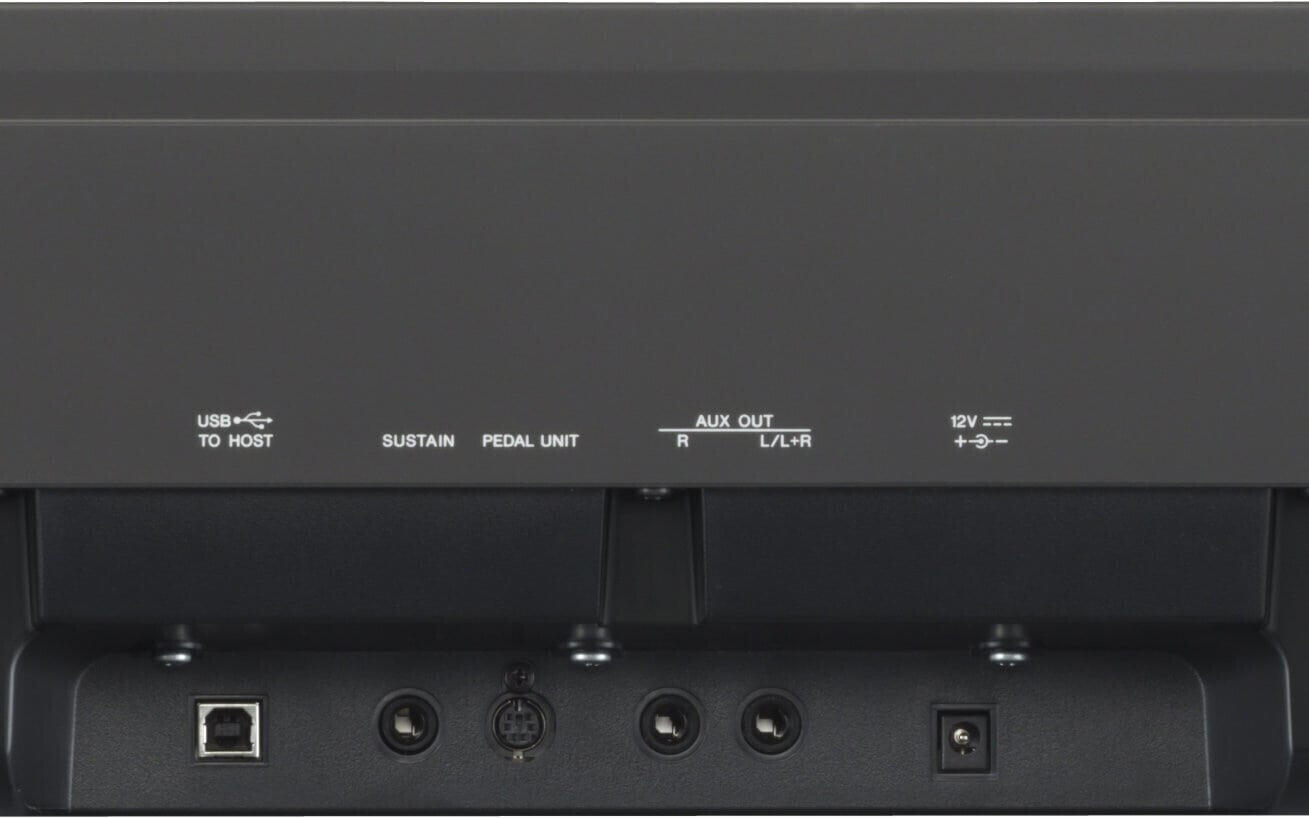

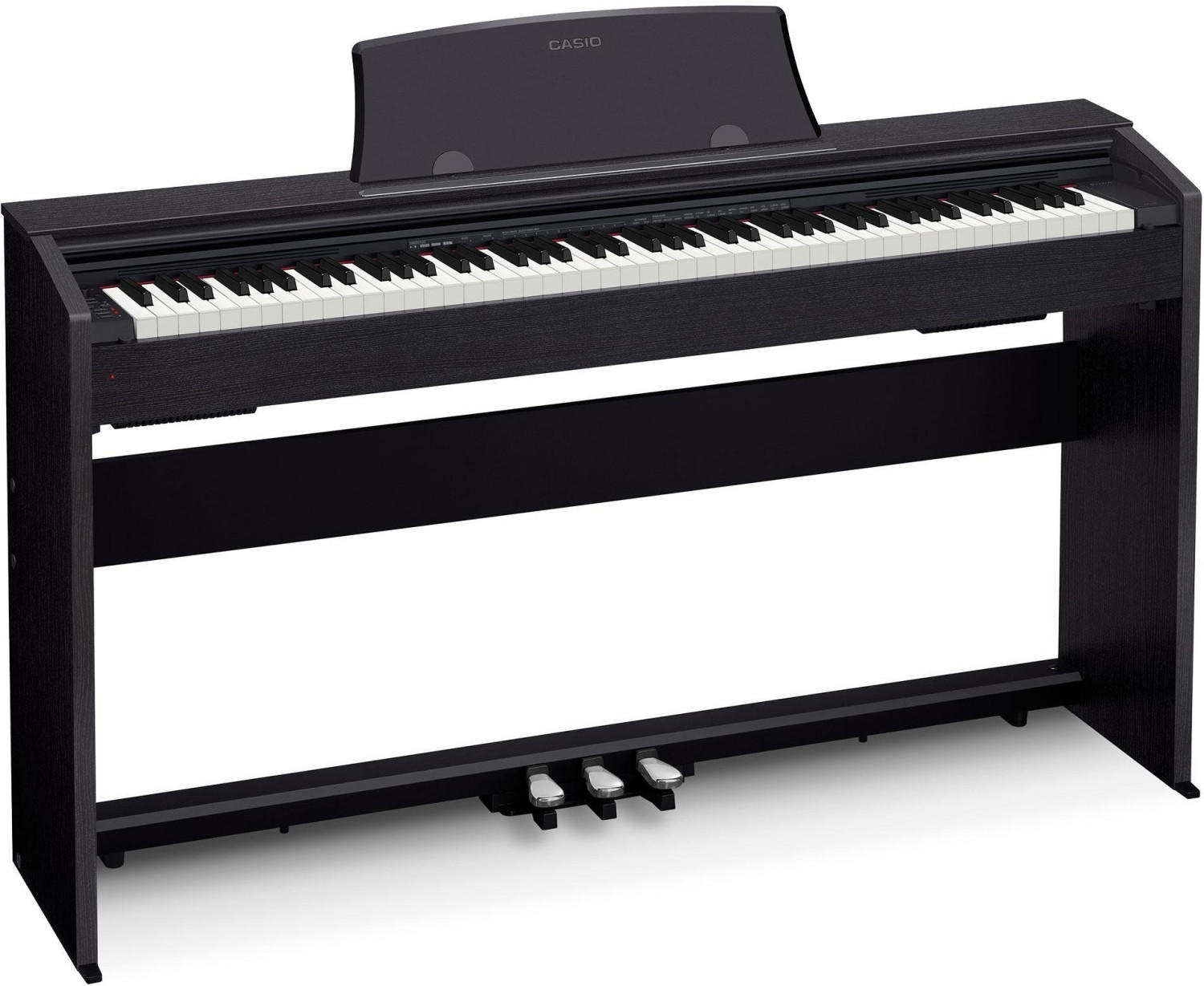
Sound quality
Digital pianos that accurately reproduce the sound and characteristics of an acoustic piano can provide an enjoyable and authentic playing experience. Look for pianos that are equipped with high-quality sound sampling technology, such as Yamaha's flagship Clavinova CLP-725. This digital piano features the renowned Yamaha CFX and Bösendorfer Imperial grand pianos' sounds, offering rich and expressive tones. Another option to consider is the Roland FP-30, which utilizes SuperNATURAL piano sound engine to deliver a natural, detailed, and dynamic sound.
Group 1: Budget-friendly digital pianos with good sound quality:
- Casio Privia PX-160 - Equipped with Casio's AiR (Acoustic and Intelligent Resonator) sound source, providing detailed and expressive piano sounds.
- Korg B2 - Features 12 different sounds, including excellent acoustic piano sounds with nuanced resonances.
Group 2: Intermediate level digital pianos with exceptional sound quality:
- Yamaha P-125 - Incorporates the Pure CF sound engine, bringing the sound of the world-renowned Yamaha CFIIIS concert grand piano to your fingertips.
- Kawai ES110 - Utilizes the acclaimed Harmonic Imaging sound technology, offering a clear and vibrant piano tone.
Group 3: Professional-grade digital pianos for advanced players:
- Roland RD-2000 - Employs the latest modeling technology to reproduce the sound and character of acoustic grand pianos, including V-Piano technology for authentic resonance.
- Nord Stage 3 - Utilizes Nord's exclusive Piano Library, offering high-quality pianos and grands from world-class brands like Steinway and Yamaha.
Remember, sound quality is a vital consideration when choosing a digital piano, but make sure to consider other factors as well to find the instrument that suits your needs and preferences.
Number of built-in sounds
This determines the versatility and range of music styles you can play on the instrument. Some digital pianos have a limited number of sounds, typically around 5-10, which may be sufficient if you primarily focus on classical music. These models are a great choice if you want a straightforward piano experience without too many bells and whistles. For example, the Yamaha P-45 offers a selection of ten high-quality voices ranging from grand pianos to unique electric pianos, allowing you to explore various genres with ease.
On the other hand, if you have a more diverse musical taste or wish to experiment with different sounds, you may want to consider digital pianos with a larger sound library. These models typically offer anywhere from 100 to 1000+ sounds, including various pianos, strings, synths, and even drums. For instance, the Roland FP-90X is equipped with an extensive collection of over 400 tones, covering a wide spectrum of music genres. Additionally, it features SuperNATURAL Piano technology and Virtual Modeling technology to provide a highly expressive and realistic piano sound. Other digital pianos such as the Kawai ES920 and Casio Privia PX-S3000 also fall into this category with their ample sound repertoire and advanced sound processing capabilities. Whether you value a vast selection of sounds or prefer a minimalist approach, there is a digital piano available to match your needs and musical style.
Sampling technology
Sampling technology refers to the process of recording and reproducing the sounds of real acoustic pianos. The quality of a digital piano's sound largely depends on how well it captures the nuances and dynamics of an acoustic piano.
One example of a digital piano that excels in sampling technology is the Yamaha YDP-164. It features the company's flagship Pure CF Sampling engine, which is renowned for its meticulous sampling process that captures the rich and expressive tones of the Yamaha CFIII concert grand piano. Another noteworthy option is the Kawai ES920. It boasts the Harmonic Imaging XL sound technology, which accurately reproduces the Kawai EX concert grand piano's sounds using multi-layered sampling and advanced digital processing. Both of these digital pianos are known for their superb sound quality and authentic piano playing experience.
Reverb effects
Reverb simulates the natural reverberation that occurs in different spaces, such as concert halls or small rooms, giving a more realistic and rich sound experience. Some digital pianos offer customizable reverb settings, allowing you to adjust the level of reverberation to suit your preferences. For those looking for a digital piano with exceptional reverb effects, the Yamaha YDP-164 Digital Piano is a standout option. It features the renowned Yamaha CFX Grand Piano sound engine that incorporates reverberation characteristics found in world-class concert halls. Additionally, the Casio Privia PX-870 Digital Piano offers realistic and adjustable reverb effects, creating a more spacious sound that resembles playing in various environments.

Chorus effects
Chorus effects add depth and richness to the sound by combining multiple voices or instruments to create a lush and immersive sound. If you are a musician who enjoys playing with a full, rich sound, it is essential to choose a digital piano that offers chorus effects.
There are a variety of digital pianos on the market that include chorus effects. In the mid-range segment, the Korg LP-380 is a great option with its built-in stereo speaker system that provides a vibrant and harmonious sound. Another option in the mid to high-range segment is the Yamaha YDP-144 which features the Pure CF Sound Engine that produces rich and high-quality sounds, along with chorus effects for added depth. High-end models like the Roland LX-17 go a step further with multi-channel speakers and an advanced SuperNATURAL Piano Modeling technology that recreates the complex, organic behavior of an acoustic piano, including chorus effects.


Metronome function
It allows for timing practice and ensures precise rhythmic accuracy. Some pianos, like the Yamaha Arius YDP-144, come with a built-in metronome that provides various time signatures and tempos to choose from. This particular model offers a range of 5 to 280 beats per minute (BPM), accommodating a wide variety of musical genres and practicing needs. Another great option is the Casio Privia PX-770, which also includes a metronome function with adjustable rhythm and beat settings. It allows users to set the tempo anywhere from 20 to 255 BPM, catering to beginners and more advanced players alike.


Song recording capability
Some digital pianos come equipped with a built-in recorder that allows you to record your performances directly on the instrument. One such example is the Yamaha YDP-144, which features a 2-track song recorder that enables you to record and playback your performances. It also offers a USB port for connecting to a computer or portable storage device to transfer your recordings. Another option is the Casio PX-870, which offers a 2-track MIDI recorder to record and save your performances for later playback. With this feature, you can monitor your progress, analyze your playing techniques, and even share your recordings with others.

Playback options
This refers to the ability of the piano to play different sounds, effects, and styles to enhance your playing experience. The Yamaha P-515 is a great choice in this regard, as it offers a wide range of playback options. It features Yamaha's Virtual Resonance Modeling (VRM) technology, which recreates the sympathetic vibrations of a traditional acoustic piano, providing a more realistic and immersive sound.
Another option to consider is the Kawai ES110. It offers 19 additional instrument sounds beyond its primary piano sound, allowing you to explore different genres and styles. The Dual Mode feature enables you to layer two different sounds to create richer and more complex musical expressions. Additionally, the Korg LP-380 is worth mentioning as it offers a total of 30 high-quality sounds, including grand pianos, electric pianos, organs, and more. These playback options provide the flexibility to experiment with different sounds and styles, making your playing experience more enjoyable and versatile.


MIDI compatibility
MIDI stands for Musical Instrument Digital Interface and it allows communication between musical devices such as keyboards, computers, and software. Many digital pianos today offer MIDI connectivity, allowing you to connect and use various virtual instruments and recording software.
One example of a digital piano that offers MIDI compatibility is the Yamaha P-125. This compact and portable piano not only provides an authentic piano feel and sound, but also has MIDI connectivity via USB. This allows you to easily connect it to your computer or other MIDI devices for recording or using virtual instruments.
Another option is the Casio Privia PX-S1000. This slim and stylish digital piano also offers MIDI compatibility through its USB port. This means you can connect it to your computer and use it as a MIDI controller for composing or playing virtual instruments.


It is worth noting that MIDI compatibility is a common feature among most digital pianos on the market. However, some higher-end models may offer more advanced MIDI capabilities such as MIDI over Bluetooth or multiple MIDI ports for more flexibility in connecting to different devices. It is important to consider your specific needs and requirements when choosing a digital piano with MIDI compatibility.
USB connectivity
This feature allows you to connect your piano to a computer, enabling you to use various music software programs and applications for recording, composing, and learning. Some digital pianos come with USB MIDI connectivity, which means they can transmit both MIDI data (Musical Instrument Digital Interface) and audio signals via a single USB cable.
One excellent option to consider is the Yamaha P-125 Digital Piano. This compact and portable piano not only offers high-quality piano sound and touch but also comes with a USB-to-Host port, allowing for seamless connection to a computer or mobile device. With this USB connectivity, you can utilize music production software like Yamaha's Smart Pianist app for enhanced control and customization of your playing experience. Another top-tier choice is the Roland FP-30X Digital Piano with USB MIDI capabilities. With this feature, you can connect the piano to music software, such as Roland's Piano Every Day app, and take advantage of educational tools and creative sound editing options.


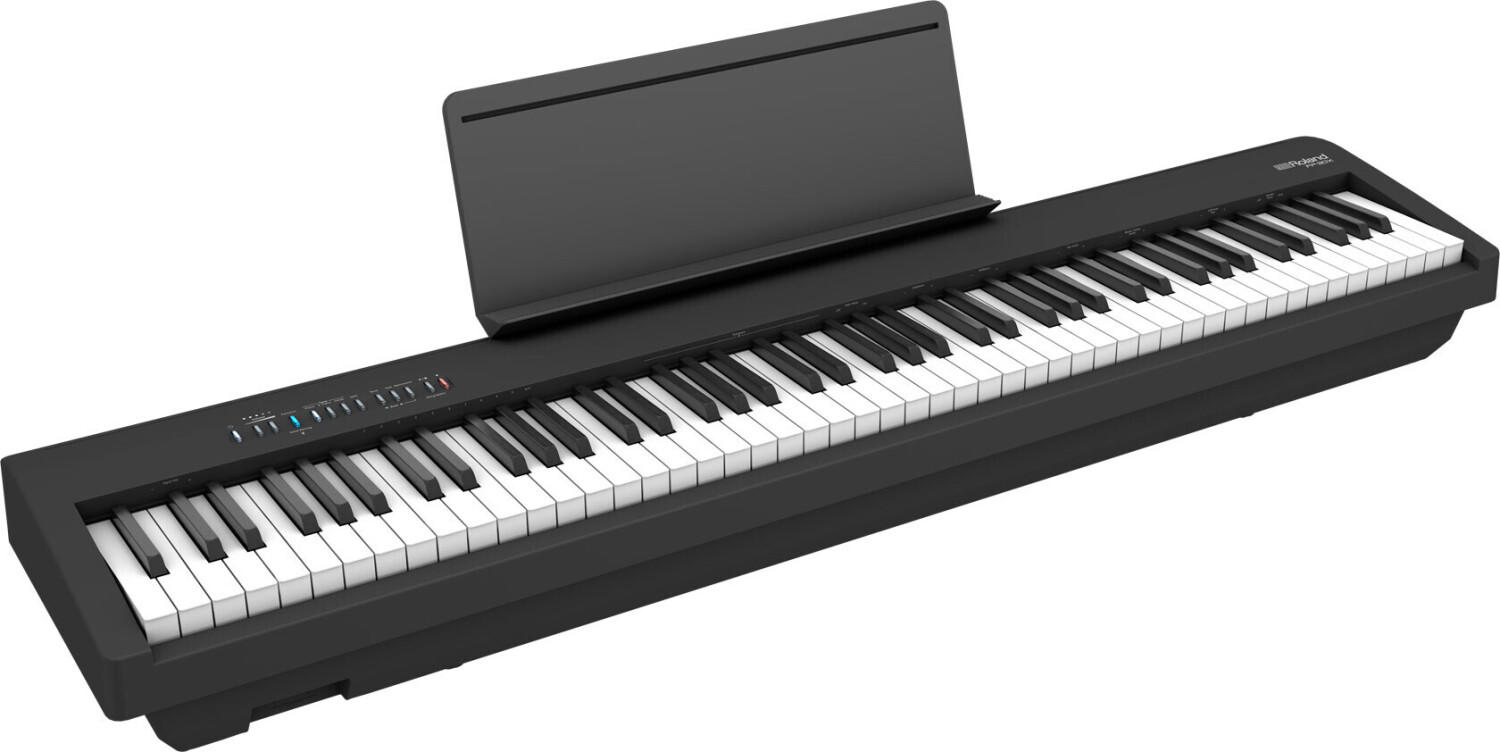
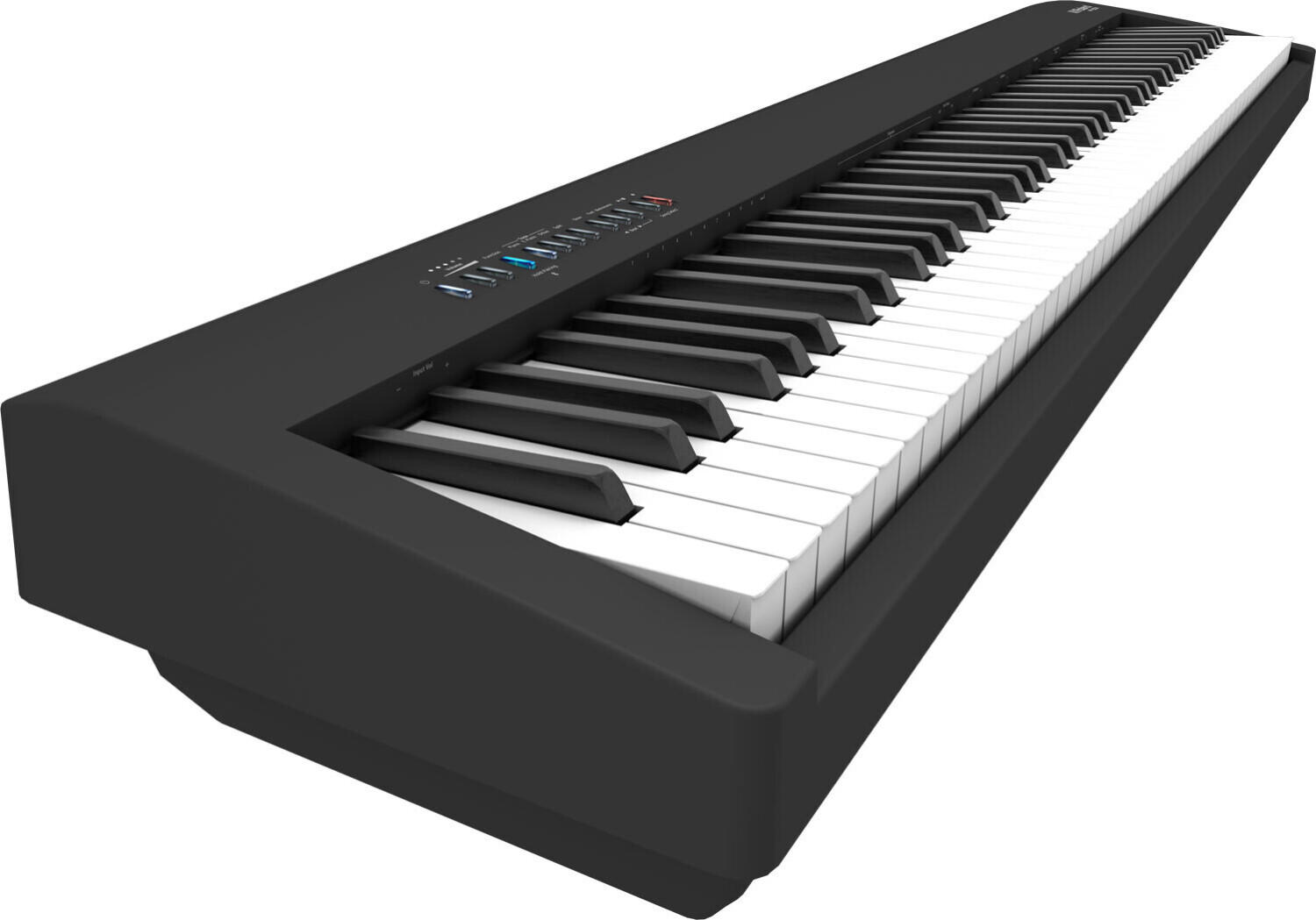
Headphone jack
A headphone jack allows you to connect your favorite headphones and enjoy a quiet and immersive playing experience. When selecting a digital piano with a headphone jack, it is crucial to ensure compatibility with your preferred headphones, be it through the standard 3.5mm connection or a quarter-inch adapter. Additionally, pay attention to whether the digital piano offers independent headphone volume control, which allows you to fine-tune the audio to your liking without affecting the overall instrument volume.
There are various digital piano models available on the market that provide excellent headphone jack features. In the entry-level segment, the Yamaha P-45 is an outstanding option with its built-in headphone jack, ensuring a seamless transition from playing out loud to practicing silently. Moving up to the intermediate range, the Korg B2 offers a convenient headphone output for private listening, along with independent volume control, allowing you to immerse yourself in your music without disturbances. Finally, if you are looking for a top-tier experience, the Roland FP-90X boasts an advanced headphone output that supports 3D ambience technology, replicating the spatial sound of a concert hall directly into your headphones. Additionally, it features individual headphone volume and spatial ambience control.
Speaker system
The speaker system is crucial in producing high-quality sound and ensuring an immersive playing experience. Look for a digital piano with a robust speaker system that delivers clear and powerful sound. For example, the Yamaha Arius YDP-144 features a built-in stereo Amplifier and 2-way speakers with 6W x 2 amplification, providing dynamic and rich sound. Another option is the Roland FP-30, equipped with powerful onboard stereo speakers and a precision-tuned amplification system that reproduces every nuance of your playing. Finally, if you prefer a portable option, the Kawai ES110 offers a concise design but still boasts built-in dual speakers with 12 watts total power, ensuring impressive sound quality for practice or performing.
Bluetooth compatibility
Bluetooth connectivity allows the piano to connect with other devices wirelessly, enabling you to play along with your favorite songs or use music apps for interactive learning and practice sessions. Look for pianos that support advanced Bluetooth protocols like Bluetooth 5.0, as they provide faster and more stable connections. Notable examples of digital pianos with excellent Bluetooth compatibility include the Yamaha DGX-670, which features Bluetooth audio streaming, allowing you to play music from your phone or computer through the piano's speakers. Another option is the Kawai ES520, which offers Bluetooth MIDI functionality, enabling you to connect wirelessly to external devices and software without the need for additional cables.

Amplification power
Amplification Power: One of the key factors to consider while choosing a digital piano is its amplification power. The amplification power is measured in watts and determines how loud and clear the sound produced by the piano will be. For smaller settings or home use, a lower amplification power of around 10-20 watts may be sufficient. Models like the Yamaha P-45 with a built-in 6W amplifier, or the Casio Privia PX-160 with 8W speakers, offer excellent sound quality for personal practice sessions or small gatherings.
On the other hand, if you intend to use the digital piano for live performances or in larger venues, it's beneficial to opt for a higher amplification power. There are several professional-grade models available with amplification power ranging from 30 watts to 100 watts or more, such as the Roland RD-2000 with dual 30W amplifiers, or the Kawai MP11SE with a 100W speaker system. These higher-powered options ensure that the sound remains punchy and balanced even in larger spaces, making them ideal for gigging musicians or stage performers.

Adjustable piano stand
An adjustable stand allows you to customize the height and angle of the keyboard, creating a more comfortable and ergonomic playing position. One example of a digital piano that comes with a reliable adjustable stand is the Yamaha P-45. This stand not only provides stability and durability but also has different levels of height adjustment to suit different players' preferences.
Another group of digital pianos that offer adjustable stands are the Casio Privia PX Series. These digital pianos have a tri-sensor scaled hammer-action keyboard that provides a realistic and responsive playing experience. Additionally, the PX series includes a sturdy and adjustable stand, such as the Casio Privia PX-870 model, which offers effortless adjustability to accommodate players of all heights. The adjustable stand combined with the advanced features of the PX series makes it an excellent choice for those seeking a versatile and comfortable playing experience.

Size and dimensions
The size of the piano is crucial as it determines how much space it will occupy in your home or studio. If you have limited space, a compact and portable digital piano might be the best choice. For example, the Yamaha P-45 is an excellent compact digital piano that measures 52.2" wide, 11.6" deep, and 6" high. It weighs only 25 lbs, making it easy to transport and store. On the other hand, if you have a dedicated music room or more space available, you might opt for a larger and more robust digital piano, like the Kawai CA79. With dimensions of 57.4" wide, 18.5" deep, and 37.2" high, it offers a more immersive playing experience while still maintaining a sleek and stylish design. Consider your available space and mobility requirements to narrow down your options when selecting the size and dimensions of a digital piano.
Portability
If you are looking for a highly portable digital piano, you might consider the Yamaha P-45. Weighing only 25 lbs, this compact and lightweight instrument offers touch-sensitive keys that accurately respond to your playing dynamics. Another excellent option is the Casio PX-S1000, which weighs just under 25 lbs and features the innovative Smart Scaled Hammer Action Keyboard, providing an authentic piano feel. For even greater portability, the Roland FP-30 is a superb choice, weighing only 31 lbs and equipped with Roland's renowned PHA-4 Keyboard for highly responsive and realistic piano playing. For those who prioritize extreme portability, you might explore options such as the Korg B2SP, which weighs a mere 19 lbs and includes a carrying case, making it ideal for frequent travelers or musicians on the go. Regardless of your specific needs, considering the portability of a digital piano will ensure that you can effortlessly transport and enjoy your instrument wherever you go.
Integrated lessons
Integrated lessons are a great tool for beginners as they provide an interactive learning experience directly from the piano. One excellent option that offers integrated lessons is the Yamaha DGX-660. With its 88-note fully weighted keyboard and advanced digital signal processing, it offers a realistic playing experience. The DGX-660 also includes a feature called "Yamaha Education Suite" which provides step-by-step lessons for beginners.
Another option to consider is the Casio PX-770 digital piano, which also offers integrated lessons. This model features Casio's highly acclaimed Tri-Sensor Scaled Hammer Action, providing an authentic feel similar to an acoustic piano. The PX-770 also comes with 60 built-in songs and a Lesson Mode, allowing beginners to learn at their own pace. With its elegant design and compact size, it is a great choice for those seeking an affordable yet quality digital piano with integrated lessons.


Lesson functionality
This features a set of tools that help beginners learn and progress in their piano playing skills. Look for pianos that offer features like a built-in metronome, dual-playing mode, and learning exercises. One great example is the Yamaha DGX-660, which not only offers a comprehensive lesson functionality but also includes a built-in recording function and a range of digital effects. Another top option is the Casio Privia PX-S1000, which provides a Duet Mode for teacher-student learning and features a Lesson function with corresponding lights to guide learners. These pianos with advanced lesson functionality can greatly aid piano students in their learning journey.
Transpose function
This function allows players to change the pitch of the entire keyboard, making it easier to play in different keys without having to physically move their hands.
One excellent digital piano that offers a Transpose function is the Yamaha DGX-660. It has a transpose range of -12 to 0 to +12 semitones, allowing players to transpose the keyboard up or down by a maximum of one octave in either direction. Another great option is the Casio Privia PX-770, which also offers a transpose feature that allows players to adjust the pitch of the piano in semitone increments. This is particularly useful for musicians who frequently play with other instruments and need to adjust their piano's pitch to match.


Split function
This feature allows users to divide the keyboard into two separate sections, each with their own sound and pitch range. It is particularly useful for duets or for practicing with separate hands. The Yamaha DGX-660 is a great digital piano that offers the Split function. This versatile instrument not only allows splitting the keyboard, but also provides the option to select different voices for each section. Another excellent option is the Casio Privia PX-770, which also comes with the Split function and offers a variety of high-quality tones to choose from for each section. Both these models are highly recommended for those looking for a digital piano with an excellent Split function.


Dual function
This feature allows the piano to function as both an acoustic piano and an electric keyboard, giving users the flexibility to switch between different playing styles or tones. The Yamaha DGX-660 is a great example of a digital piano with dual function capabilities. It features Yamaha’s high-quality Grand Piano sound, as well as a wide variety of other instrument voices, such as strings, organs, and guitars. Additionally, the DGX-660 has a built-in 6-track recorder which allows users to record their performances and playback later. Another option is the Casio Privia PX-560. This digital piano comes with Casio's Tri-Sensor Scaled Hammer Action II keyboard, which provides the feel of an acoustic piano. It offers a range of tones, including their acclaimed AiR sound source and an extensive library of built-in rhythms and accompaniment styles. With its dual function, this piano allows musicians to explore various musical genres and styles.
Layering function
This feature allows you to play multiple sounds simultaneously, giving depth and richness to your music. For those who desire this versatility, the Yamaha DGX-660 is a fantastic option. This piano offers a Dual function which permits you to combine two different sounds, such as piano and strings, to create stunning musical textures. Another remarkable choice is the Kawai ES110, which offers a layering function that combines two different sounds while allowing individual volume control over each sound independently. These digital pianos cater to musicians seeking the ability to layer sounds and achieve greater complexity in their performances. Overall, the layering functions of instruments like the Yamaha DGX-660 and Kawai ES110 give you the freedom to expand your creativity and explore a wide range of musical possibilities.
Accompaniment styles
Accompaniment styles refer to the pre-set patterns and backing tracks that the piano can provide, which can enhance your playing and make it sound like you have a full band or orchestra with you. The Yamaha DGX-660 is a great option for those who want a wide variety of accompaniment styles to choose from. It offers over 200 built-in styles, including pop, jazz, rock, and more. Another solid choice is the Casio PX-S1000, which features 200 accompaniment styles as well. Additionally, the Roland FP-30X offers 72 rhythm styles, allowing you to add a touch of complexity and depth to your playing. Overall, when considering digital pianos, make sure to check the accompaniment styles available and choose one that best suits your musical needs.
Pitch bend wheel
This wheel provides the ability to manipulate the pitch of the sound being played, allowing for the expression and control of melodies. Two digital pianos that offer this feature are the Yamaha YDP-164 and the Casio Privia PX-870. The Yamaha YDP-164 boasts a smooth and responsive pitch bend wheel, providing a wide range of pitch variation. Additionally, it offers a Virtual Resonance Modeling (VRM) feature that recreates the subtle resonance and reverberation of an acoustic piano. The Casio Privia PX-870, on the other hand, features a Tri-sensor Scaled Hammer Action Keyboard which accurately captures the nuances of a grand piano, enhancing the overall playing experience. Both digital pianos are equipped with pitch bend wheels, giving musicians the flexibility to add depth and expression to their performances.
USB storage capability
With this feature, you can easily store or transfer your piano recordings, compositions, and settings to external devices such as USB flash drives or computers. Some popular models with this capability include the Yamaha YDP-184 and the Casio Privia PX-S3000.
The Yamaha YDP-184 comes equipped with a USB-to-Host port, allowing you to connect the piano to a computer or mobile device for seamless data transfer. The instrument supports various file formats, including MIDI and audio WAV, allowing you to save your performances in high-quality formats. Additionally, the Yamaha YDP-184 comes with a built-in storage memory of approximately 1.5MB, providing ample space to store your recordings before transferring them to an external USB device.
On the other hand, the Casio Privia PX-S3000 boasts a unique feature called Audio Recorder and playback via USB. The instrument supports USB flash drives directly, allowing you to record and save your performances or compositions as audio files (in .WAV format) directly on the USB device. The PX-S3000 also features a USB-to-Host connection for easy connectivity to a computer, enabling seamless integration with music production software.
These two pianos are examples of high-quality instruments that offer USB storage capability. By considering this feature, you can easily store and transfer your musical creations, providing convenience and flexibility in managing your digital piano recordings and compositions.
Display screen
A good display screen on a digital piano offers clear and easy-to-read information, making navigation and adjustment of settings much easier. For those who value a high-quality display, the Yamaha YDP-S54 is a great option. Its full-color LCD screen provides a clear and detailed representation of settings and functions. Another option to consider is the Casio PX-S3000, which features a vibrant and responsive touch display that allows for intuitive navigation through its various features and settings. These digital pianos add convenience and ease to your playing experience, making them great choices for those who desire a clear and user-friendly display screen.
Power supply type
Most digital pianos can be powered either by an AC power adapter or batteries. AC power adapters provide a reliable and constant power source, ensuring consistent performance without the worry of running out of battery. However, they require access to a power outlet, limiting portability. For those who prioritize mobility, digital pianos that can be powered by batteries are a great option. One excellent choice is the Yamaha P-45, which can be powered by either an AC adapter or batteries, allowing you to play on the go without compromising on quality. Another versatile option is the Casio Privia PX-160, which also offers battery power capability along with an AC adapter. Both digital pianos boast exceptional sound quality and touch response, making them suitable for pianists of all skill levels.
Price
There are options available in various price ranges to fit different budgets. For those on a tight budget, the Yamaha NP-12 is a great entry-level digital piano that offers 61 touch-sensitive keys, 10 preset voices, and a compact design ideal for beginners. If you are willing to spend a bit more, the Casio Privia PX-160 is a highly recommended option in the mid-range segment. With 88 weighted keys that provide a realistic piano feel, a wide range of 18 built-in tones, and dual headphone outputs, this model offers a premium experience at a reasonable price. On the higher end, the Roland RD-2000 offers professional-grade features, weighted keys that mimic the feel of an acoustic piano, over 1,100 included tones, and advanced customization options for experienced pianists and musicians.
Variety of brands
Different brands offer unique features and specifications that can greatly affect your playing experience. Some well-known brands include Yamaha, Roland, and Kawai. Yamaha, for example, is known for its high-quality sound production and realistic key action. Their Yamaha YDP-144 model boasts an authentic piano sound and touch, making it a great choice for aspiring pianists. On the other hand, Roland has gained popularity for its innovative technology, such as their SuperNATURAL Piano Modeling and PHA-50 progressive hammer action keyboard. The Roland FP-30 is a popular option that offers a wide range of sounds and a compact design suitable for both beginners and experienced players. For those looking for a premium experience, Kawai is a renowned brand, particularly known for its wooden key actions which emulate the feel of an acoustic piano. Their Kawai MP11SE model even includes wooden keys with a sculptured surface to enhance playing control and comfort. By considering the pros and cons of particular brands like Yamaha, Roland, and Kawai, you can find the digital piano that aligns with your desired playing experience.
